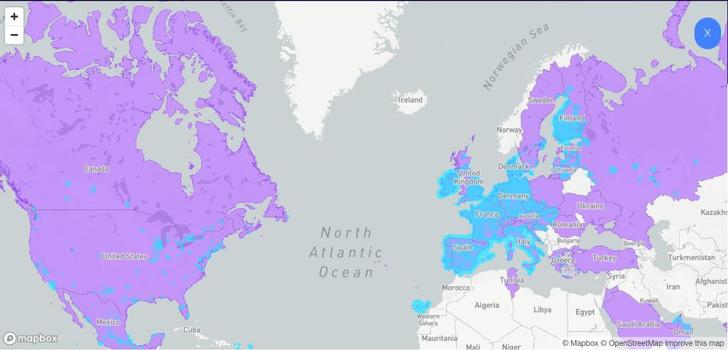While doing some online research I stumbled on an interesting report about smart cities. The IMD Business School started publishing an annual Smart Cities Index in 2019 and I was reviewing the 2020 edition. I expected to see several U.S. cities in the top 10 but surprisingly, there was only one: New York, of all places. And out of the top 50? There are a total of 12 U.S. cities, with yet another surprise: tech-centric San Francisco dropped down from 12th to 27th.
Instead of finding a chunk of the U.S. taking up much of the top 50 cities, Europe and Southeast Asia make up the bulk of the list. Admittedly, it’s probably my U.S.-centric view of the world that set me up for this. Even so, why is the list the way it is? After some deep thought, I have some ideas.

One data point used for the survey isn’t what you’d expect
I figured some analysis was done to rank the cities. And some was done. But citizens were also asked about perceptions of their own “smart city”:
The Smart City Index ranks cities based on economic and technological data, as well as by their citizens’ perceptions of how “smart” their cities are.
Given these parameters, I can see why cities in Europe and Southeast Asia would still rank higher. Here in the U.S., we might think we’re the technological capital of the world. But the reality is when used as proxies, certain technologies are more advanced overseas.
Go to Singapore, the number one ranked “smart city” in the report and you’ll see average broadband speeds of 252.68 Mbps according to SpeedTest’s global rankings. That’s good for the second spot in those rankings while the U.S. is 12th on the list, averaging speeds of 195.45 Mbps. If you ask someone from each country about how “smart” their cities are, I’m sure broadband speeds and other similar factors will heavily impact their perceptions.
Cities higher in the ranking care more about infrastructure
What do Singapore, Helsinki, Zurich, Auckland, and Oslo all have in common? Besides being the top five smart cities in the 2020 report, they’re all known for robust, modern urban infrastructure. The U.S.? Not so much although there are few exceptions here and there.
Looking at public transportation, for example, a 2018 McKinsey report highlighted 24 cities around the world as the best (free account registration required). The results are based on 80 questions around these five attributes: Availability, affordability, efficiency, convenience, and sustainability.
In the top 12, there are two U.S. cities: Chicago ranked 9th and New York grabbed the 11th spot. Looking at the remaining 10, I see that most of them are high on the “smart cities” chart from the IMD Business report. Singapore is again number one with technology-forward cities such as Hong Kong, London, Madrid, and Seoul also in the top rankings.
Sure, every country (and even every city) has different priorities and budget constraints; it’s not about the politics here. This is simply about which regions invest more in public infrastructure. And I think public transportation is one of many infrastructure segments that influence the perceived level of technology. Again from the McKinsey report:
…many cities surveyed continue to develop rail infrastructure, and enhance travel comfort and intermodality as part of their transport strategies. Other positive changes such as in electronic services, ticketing systems, and shared transportation are driven by rapid technology development.
Pricing and the carriers
Here in the U.S., an IoT sensor is likely to be paired up with a cellular carrier. You’re going to get great coverage of course, but it’s going to cost you. The least expensive LTE Cat-M1 from AT&T is $2.99 up-front and $0.99 per month. That’s a cost of roughly $15 a year, per device for 500 Kb monthly. A similar plan from Verizon? It’s $1.50 for the LTE CatM-1 SIM card and $1.50 per month per device. That doubles your usable bandwidth to 1 MB of data over AT&T and it costs $19.50 for the first year.
Over in Europe, there’s another option from Sigfox, which is a proprietary IoT messaging network. And you can see by the Sigfox coverage map, it’s widely rolled out in Europe to compete with carriers as opposed to U.S. options:

Simply put, this lower-priced option isn’t widely available in the U.S. And that’s a shame because it’s cheaper. After currency conversion, you could pay $13.17 per device for 140 daily messages with Sigfox. Does your smart city sensor only need 50 or fewer daily messages? You can drop your monthly cost by a third.
I’m not suggesting that Sigfox is the best IoT network to consider or that we don’t have non-carrier options in the U.S. But there are more choices in non-U.S. cities as the carriers here want to follow the same business model they did with mobile broadband for phones and tablets: Lobby hard and keep competition outside of the carrier space. And if you’re building a smart city in the U.S., how does that help you make the effort cost affordable?
It doesn’t, which is why I hope smart city developers look at non-carrier options such as Amazon Sidewalk, general LoRaWAN implementations, and Twilio, to name a few. The less expensive it is to connect thousand or even tens of thousands of smart city devices in the U.S., the more likely smart city projects can actually be deployed.
